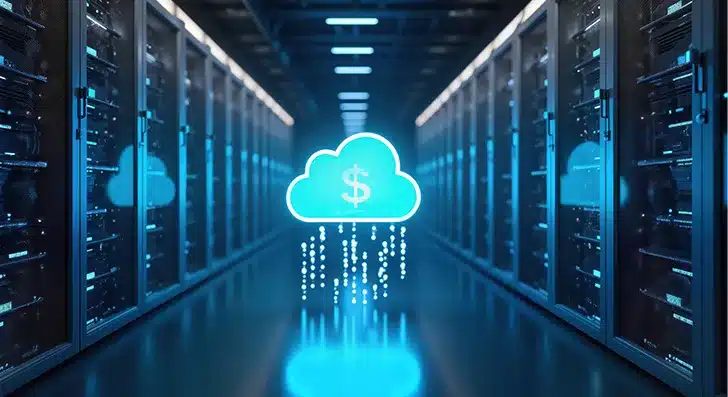Today, many organizations are using Amazon Web Services (AWS) to run their businesses. However, AWS cloud cost management can be complex, especially if you’re not careful. That’s where AWS cost optimization comes in. It involves identifying and eliminating wasted resources, choosing the right pricing models, and implementing cost management strategies to ensure you’re only paying for what you need. In this post, we will explore different strategies for AWS cost management. We’ll also cover the various AWS cost optimization tools that help you manage your cloud spending effectively.

Best Strategies for AWS Cloud Cost Management
Listed below are the proven methods that help you manage your cloud costs.
1. Monitor Resource Consumption
Continuously monitoring and analyzing your AWS usage is essential for effective cost management. Cloud environments are dynamic, so you need to establish measures and monitor them for accurate visibility and ongoing cost optimization. Define clear metrics, set specific targets, and review the usage regularly. Use tools like AWS Cost Explorer to visualize spending patterns and identify areas for improvement. Regularly assess your usage and look for opportunities to reduce costs.
2. Rightsize Resources
Ensure the resources you provision match your actual requirements and needs. This involves selecting the appropriate CPU, storage, network throughput, and memory for your computing tasks. Use AWS Compute Optimizer to get recommendations on optimal instance sizes based on your historical usage patterns. Regularly review and adjust your instance sizes to match your current workload demands. AWS Compute Optimizer can help you choose the right sizes for Amazon EC2 instances, Amazon EBS volumes, ECS services on AWS Fargate, and AWS Lambda functions. By rightsizing, you pay only for what you need, leading to significant cost savings.
3. Use the Right Pricing Model
AWS offers various pricing models, including On-Demand, Spot Instances, Savings Plans, and Reserved Instances. Choose the pricing model that best aligns with your workload’s needs to optimize costs. Savings Plans provide flexibility and can lower costs for EC2, Lambda, and Fargate by committing to continuous usage. You can use AWS Cost Explorer to choose the right options for your plan, based on your recent utilization analysis. Spot Instances can be used for non-critical, flexible workloads to save nearly 90% compared to on-demand prices. They are suitable for batch processing, background tasks, and workloads tolerant of interruption. Regularly evaluate your workload characteristics and adjust your pricing model strategy accordingly to maximize cost savings.
4. Optimize Storage Costs
AWS offers several storage tiers, each with different performance levels and costs. Optimize your storage costs by identifying the appropriate destination for specific data types. For lower performance requirements, you may consider using Amazon EBS Throughput Optimized HDD (st1), which usually costs less than General Purpose SSD (gp2). Implement lifecycle policies to move infrequently accessed data to cheaper storage solutions. Automate the deletion of old logs or backups using lifecycle policies to further reduce storage costs.
5. Increase Elasticity
The cloud model enables you to optimize costs by meeting dynamic needs and turning resources off when you no longer need them. Schedule unused instances to shut down at the end of the working day, during weekends, or during vacations. For non-production instances, prepare on and off hours in advance. Evaluate usage metrics to determine when instances are frequently used and implement accurate schedules. Implement AWS Auto Scaling to match demand by automatically adjusting the number of active instances in response to demand, ensuring you only pay for the resources you need.
6. Implement AWS Organizations and Consolidated Billing
Use AWS Organizations to automate account creation, create groups of accounts, and govern these groups. The consolidated billing feature consolidates charges for all your accounts, making it easier to get an overview of your cloud costs and manage your bill as a whole. Create separate accounts for production and development to easily see the charges associated with each. Consolidated billing also allows you to take advantage of volume pricing tiers and bundled discounts.
7. Introduce Tagging
Tagging your AWS resources is essential for organizing expenses and tracking costs accurately. Add cost allocation tags to your resources to categorize expenses by environment, department, project, or any other relevant criteria. Use these tags to generate detailed cost reports and analyze spending patterns. A well-defined tagging policy helps ensure that all resources are properly tagged. Use consistent and meaningful tags to improve cost visibility and accountability.
8. Delete Unused Resources
Regularly check and delete resources you’re not using to avoid being charged for them. Find idle EC2 instances, unused EBS volumes, and orphaned snapshots. Use AWS Trusted Advisor to find unused resources. Make a plan to get rid of resources when you don’t need them. By deleting unused resources, you can save money and make your AWS setup efficient.
9. Use AWS Budgets and Alerts
Set budget limits to monitor your AWS spending and usage. AWS Budgets can alert you when you’re close to your allocated budget. This helps you avoid unexpected costs. You may also create budgets for different departments, projects, or setups. Regularly check your budget performance and adjust your spending as needed. By using AWS Budgets, you can manage your cloud spending and avoid surprises later on.
Overcoming AWS Cloud Migration Challenges Like Pro
12 Best AWS Cost Optimization Tools for 2025
Given below are the tools that help you manage your AWS spending and lower your cloud management bills.
I. AWS Cost Explorer
AWS Cost Explorer is a tool that helps you analyze your cloud spending. It has an easy-to-use interface where you can view your cost and usage data. The tool helps you find trends in your spending and forecast future costs. You can use this data to make better choices about your cloud spending. It looks at your past data to help you understand where you can optimize.
| Features | Benefits |
|---|---|
|
|
II. AWS Budgets
AWS Budgets lets you set custom budgets to track your cloud costs and usage. You can create different types of budgets and receive alerts when your spending crosses your set limits. This helps you stay in control of your costs and avoid surprises on your cloud bill. It is a simple tool that lets you proactively manage your spending.
| Features | Benefits |
|---|---|
|
|
III. AWS Trusted Advisor
AWS Trusted Advisor is like a helper that looks at your AWS setup and gives you advice on how to make it better. The tool gives you tips on how to save money, improve your system’s speed, and make it more secure. It’s like getting a free expert review of your AWS setup.
| Features | Benefits |
|---|---|
|
|
IV. AWS Instance Scheduler
The Amazon Instance Scheduler helps you automatically stop and start Amazon EC2 and Amazon RDS instances using information from Cost Explorer. You can scale and schedule Amazon Web Services EC2 according to your anticipated usage pattern, demands, and requirements. This is useful for resources that don’t need to run all the time, like development or testing environments.
| Features | Benefits |
|---|---|
|
|
V. ProsperOps
It is a tool that automatically manages AWS discount options like Reserved Instances and Savings Plans to lower your cloud costs. It figures out the best mix of these discounts to get you the maximum savings. ProsperOps adapts to changes in your cloud usage without needing you to make any technical changes. It aims to lower your AWS costs by automatically optimizing your discount plans.
| Features | Benefits |
|---|---|
|
|
VI. CloudZero
CloudZero is a cloud cost intelligence platform that gives engineers and finance teams more visibility and control in the cloud. It combines detailed consumption information with data visualization to provide a transparent cost management tool. CloudZero uses real-time cloud monitoring and alerts to keep teams on top of their spending, even in multi-cloud environments.
| Features | Benefits |
|---|---|
|
|
VII. Economize
Economize offers adaptable cloud cost optimization services. Its billing console system gives users a broad perspective on their monthly spending, unit costs, and budgeting strategies, among others. It gives a complete view of expenditures, resource utilization, and unit costs.
| Features | Benefits |
|---|---|
|
|
VIII. Zesty
Zesty scales your cloud resources to meet your real-time business demands by automating storage, AWS Reserved Instances, and Savings Plans management. With Zesty Disk, you can automatically shrink and expand block storage volumes based on real-time usage to save up to 70% on cloud storage costs.
| Features | Benefits |
|---|---|
|
|
IX. FinOut
Finout provides deeper insights into your cloud spend than native cost tools. You can analyze usage-based costs using customizable reports and dashboards. In addition, you can set up custom alerts to reach your team when certain usage or cost milestones are met.
| Features | Benefits |
|---|---|
|
|
X. nOps
nOps is an AWS cost optimization platform that helps AWS users reduce their costs. It provides a suite of tools to cover all your AWS cost optimization needs. nOps is entrusted with over 1.5 billion USD in cloud spend and was recently ranked in G2’s cloud cost management category.
| Features | Benefits |
|---|---|
|
|
XI. Cast.ai
Cast.ai is a cloud cost optimization platform that focuses on Kubernetes. It helps you manage and autoscale your clusters, visualize and monitor your Kubernetes costs in real time, as well as detect and remedy your Kubernetes vulnerabilities and configuration issues.
| Features | Benefits |
|---|---|
|
|
XII. Harness
Harness helps you analyze your cloud spending and find ways to optimize it. The platform is designed to give engineers and DevOps teams detailed, up-to-date information about cloud costs. It works with different cloud platforms and Kubernetes clusters.
| Features | Benefits |
|---|---|
|
|
Summing Up
AWS cloud cost optimization is crucial for enterprises looking to maximize the value of their investments. By implementing the above-mentioned strategies, companies may achieve significant cost savings. These savings free up financial resources for strategic tasks and improve overall profitability.





